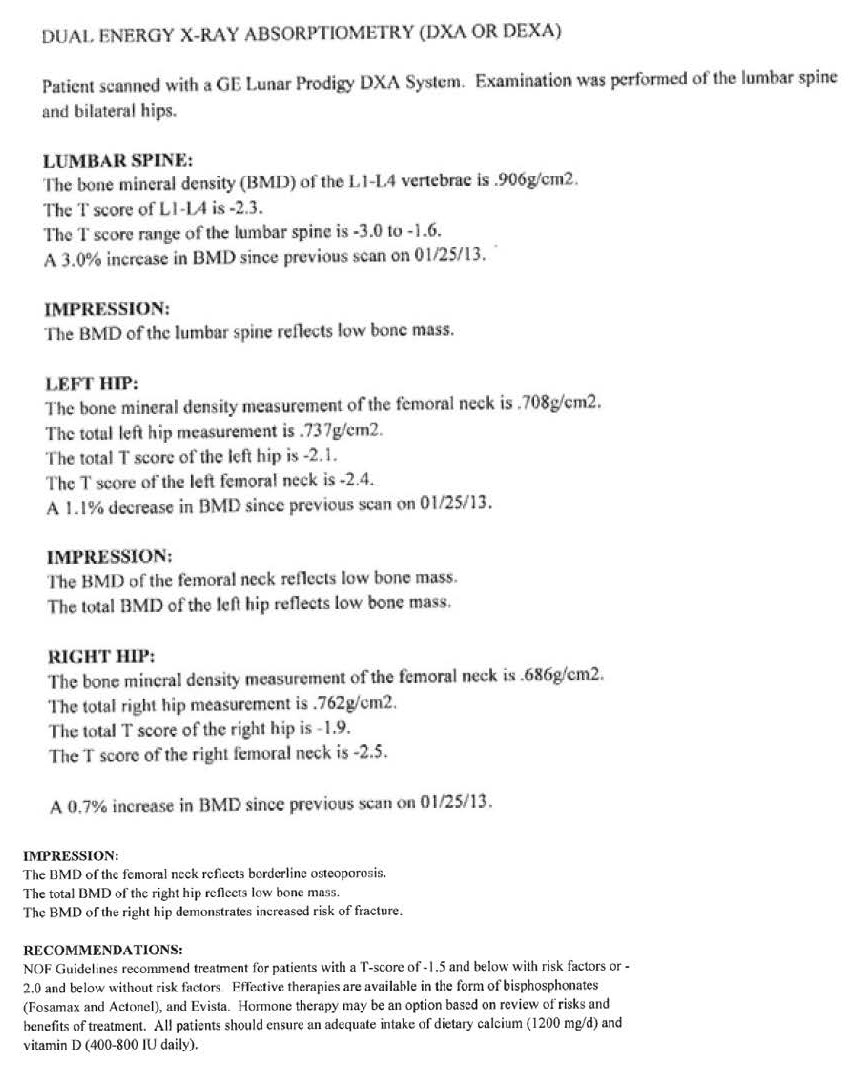DXA Report Problems
This DXA report does not contain many recommended elements for a DXA report. A range of T-scores should not be reported. There should only be one DXA diagnosis. There is not a category of “borderline osteoporosis”. While interval changes are reported, there is no information from the facility’s short term precision data which would let the significance of change be gauged. It is not stated whether the changes are significant or not.

This DXA report from a patient referred to the clinic does not include many of the recommended elements of a DXA report. (/wp-content/uploads/2020/11/US-ADULT-DXA-SAMPLE-REPORT-2025.pdf). There should be only one diagnosis on the report. “Borderline osteoporosis” is not a diagnosis. While interval change information is presented there is no information about precision (95% confidence intervals) by which the significance of change may be gauged.
Sarah L Morgan, MD, RD, CCD, The University of Alabama at Birmingham
• Krueger, D., et al., DXA Errors Are Common and Reduced by Use of a Reporting Template. J Clin Densitom, 2019. 22(1): p. 115-124.
• Johnston, R., et al., Quality assessment of bone density testing by DXA – Evaluation of technical and reporting deficiencies identified at a tertiary osteoporosis clinic. . J Clin Densitom, 2016. 19: p. 538-9